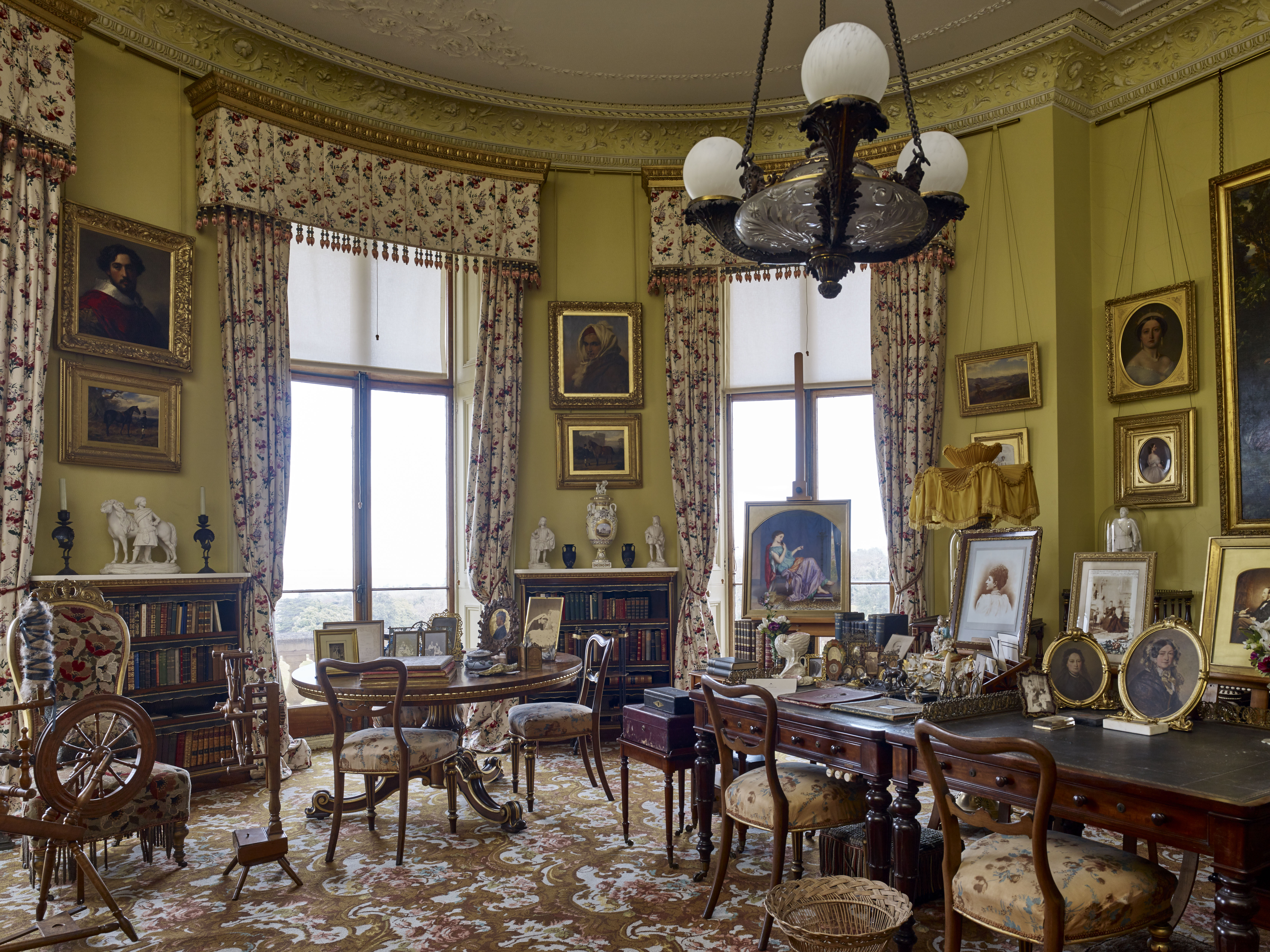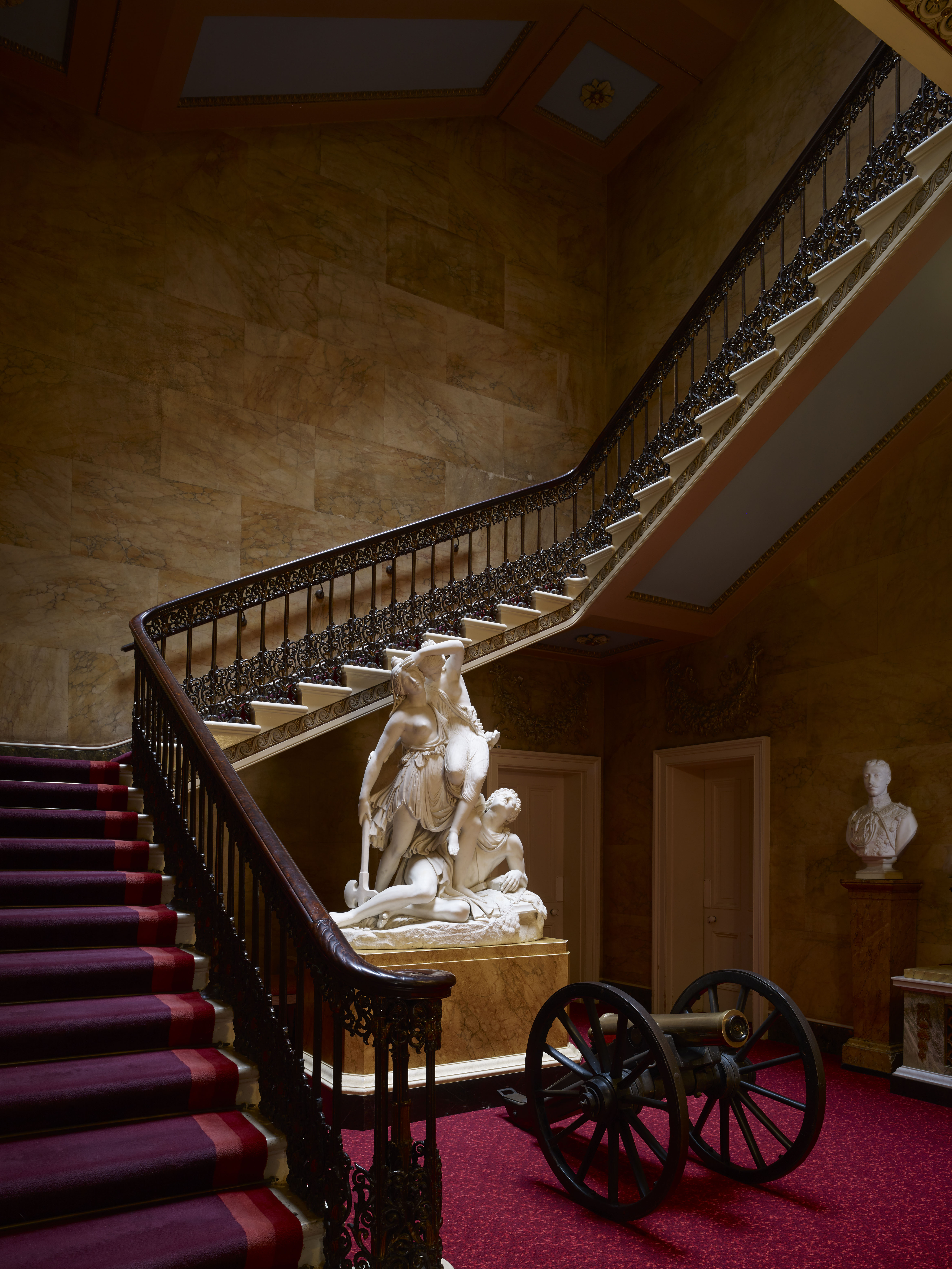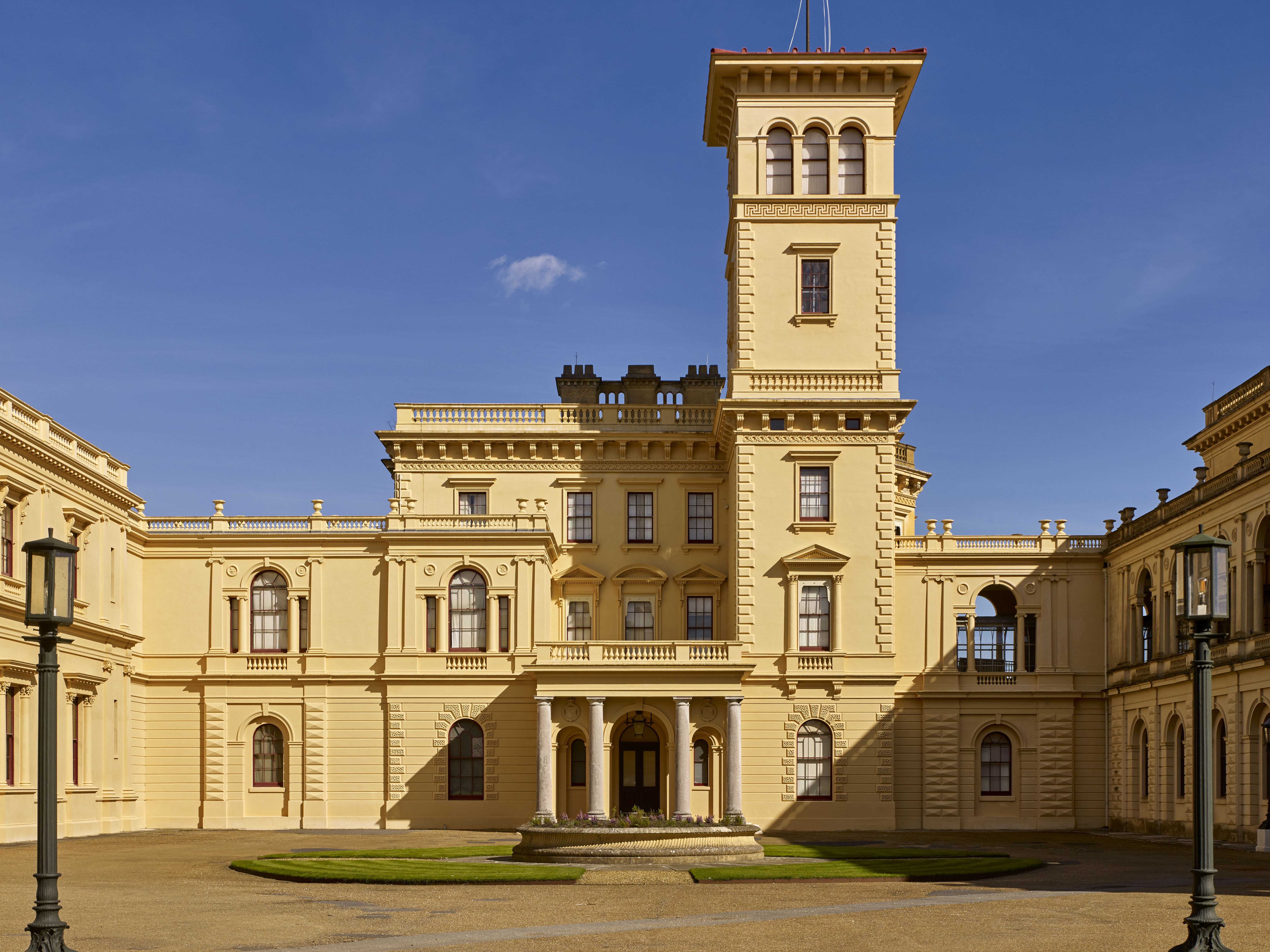Osborne House: Victoria and Albert’s Italian getaway on the Isle of Wight
The search for privacy and peace encouraged Queen Victoria and Prince Albert to create an Italianate seaside villa. It offers an unparalleled insight into their domestic life and private interests, as John Goodall explains.


On March 25, 1845, Queen Victoria wrote to her uncle Leopold, King of the Belgians: ‘You will I am sure be pleased to hear that we have succeeded in purchasing Osborne in the Isle of Wight… It sounds so snug and nice to have a place of one’s own, quiet and retired.’
The purchase was something of a dream fulfilled: married five years previously with a growing family, the Queen and Prince Albert had long been eager to find a place where they could escape from public attention, the pressures of official life and the unhealthy atmosphere of London.

The search for a private country retreat had begun in October 1843 and the royal couple visited Osborne for the first time the following year. Queen Victoria already knew the Isle of Wight slightly and, in 1833, had spent nearly two months at the neighbouring estate of Norris Castle, a Regency house by James Wyatt superbly set above the Solent (today, in a depressing state of dereliction).
At this moment, the island was changing very quickly. The connection with the mainland began to be served by paddle steamers from the 1820s and, in 1840, the railway line between Southampton and London was completed. As a result, by the 1840s, the Isle of Wight was within about four hours’ travel of the capital. It offered, moreover, beautiful countryside, not to mention the pleasures of sea-bathing and sailing.

In a memorandum dated October 21, 1844, Prince Albert extolled the setting of the property, the privacy of the estate, its connection to the sea and its accessibility from both Windsor and London, as well as the quality of the air (which was also approved by the Queen’s physician). The poor condition of the estate additionally presented him with the prospect of an improvement project.
Initially, at least, there was no intention to transform the existing 1770s house on the site. Prince Albert described it as warm, small and comfortable, but requiring ‘only the addition of a few rooms to make it a very suitable and comfortable residence for the Queen and the children and part of the suite’.
The purchase had to be made with money from the Privy Purse; in this case, effectively private funds saved by means of Prince Albert’s reforms to the Royal Household.
Sign up for the Country Life Newsletter
Exquisite houses, the beauty of Nature, and how to get the most from your life, straight to your inbox.
To help plan the modest architectural changes that were intended, the reliable and experienced London builder Thomas Cubitt was asked to inspect the property.

Cubitt immediately warned that a new house was essential and would cost less in the long term than mere repair. In May 1845, therefore, immediately after the purchase of the property for the bargain price of £28,000 (Balmoral, which they bought in 1852 using money bequeathed to the Queen by an unknown admirer, cost £31,500), he discussed the future plans for the house with Prince Albert.
At this juncture, an architect might have been appointed to the project. Working with a builder, however, Prince Albert saw the potential to realise the project himself. It must have helped that Queen Victoria also liked Cubitt, ‘than whom’ she said, ‘a better, kindhearted man never breathed’. The cumulative result of Cubitt’s discussion with Prince Albert was a phased rebuilding after initial repairs.
The entire family came to Osborne for the first time in the spring of 1845. Writing to Lord Melbourne, the Queen enthused:
‘It is impossible to imagine a prettier spot… we have a charming beach quite to ourselves. The sea was so blue and calm that the Prince said it was like Naples. And then we can walk about anywhere by ourselves without being followed and mobbed.’

Work to the first element of the new house, the Pavilion, began later that summer. Its foundation stone was laid on June 23, 1845, when the Queen and Prince Albert descended into the building trenches with their two eldest children and deposited a glass box of coins and an inscription. The building was contracted to cost £15,000.
In planning terms, the Pavilion broadly resembles a self-contained town house of the kind that Cubitt was building in London. To protect against fire, the floors were of brick arches supported on iron girders and the brick walls were held together using iron.
The principal entertainment rooms are wrapped around a central stair hall and interconnect in a manner perhaps inspired by German example: the dining room leads directly into a drawing room and a billiard room beyond. The latter two rooms are arranged at right angles to each other and are divided by a screen of columns and a curtain rather than a wall.

It has been suggested that this unusual arrangement permitted courtiers and the Royal Family to relax in the same space without seeing each other. Queen Victoria latterly learnt to play billiards and would have games after lunch with other women in the household.
On the floor above, Albert and Victoria had their private apartments, with a bedroom and associated suite for each of them. Between the two sets of rooms sat the Queen’s Sitting Room, a private drawing room with a large bow window and balcony to which the couple could retire. On the floor above were the nursery and its associated rooms.
Perhaps the most surprising thing about the Pavilion was its style. The Royal Family might have been expected to commission a Gothic building similar to Norris Castle; it was an idiom that was understood to celebrate the authority and legitimacy of the British monarchy. The Queen, moreover, was an enthusiast for the novels of Walter Scott and she and her husband had appeared at a celebrated costume ball in 1842 dressed respectively as Queen Philippa of Hainault and Edward III.

In fact the new building was constructed in the form of an Italian Renaissance palazzo. This style, first introduced to London in 1828 by The Travellers Club (Country Life, February 20, 2019), was gaining wide currency in the 1830s and had already been adopted by Cubitt in some of his London houses (which Albert knew).
It had the virtue of being politically ambi-guous (if anything, it was associated with Whig politics; Gothic had Tory overtones) and relatively cheap, a consideration given that Osborne was a private undertaking. To Prince Albert, however, this style had one obvious additional appeal: he was fascinated by the Italian Renaissance, to which he had been introduced both by travel and the work of the Nazarenes, a circle of Romantic painters who pioneered the revival of fresco painting (which the Prince also advocated in his role as chairman of the Fine Arts Commission).

It is no coincidence, therefore, that he not only hung his bedroom at Osborne with a notable collection of Renaissance paintings, but also commissioned a fresco from William Dyce at the head of the nursery staircase in the Pavilion.
It was also as a direct result of these interests that, in 1841, Prince Albert was introduced to Ludwig Grüner, a noted scholar of Italian art who settled in England and produced, from 1844, a series of high-quality, illustrated volumes on the subject with his friend, the publisher John Murray.
In 1845, Grüner was appointed the first – and only – salaried Adviser in Art to the Royal Household, advising on the architecture and internal decoration of Osborne.
The Royal Family moved into the Pavilion on September 15, 1846. Lady Lyttelton described the experience: ‘Everything in the house is quite new, and the dining room looked very handsome… After dinner we rose to drink the Queen’s and Prince’s health as a house-warming. And after it the Prince said very naturally and simply, but seriously, “We have a hymn in Germany for such occasions”… It was dry and quaint, being Luther’s, but we all perceive that he was feeling it. Much the best part was… Lucy Kerr (one of the maids of honour) throwing an old shoe after the Queen as she entered for the first night this being a Scottish superstition.’

By this time, detailed plans were already being laid to erect the ancillary wings of the house. These were intended to accommodate the household, as well as additional formal apartments for business of state, such as the Council and Audience Chambers. It was in the former, in June 1857, that Albert received the title of Prince Consort. Linking these wings to the Pavilion was the Grand Corridor, a long sculpture gallery
Work continued on the wings until 1851, when a great party was thrown for all the workmen involved in the project.
Cubitt left the interiors of the new house without ornamental finish and the present decoration took shape gradually under the direction of Grüner (until he returned to his native Dresden in 1856). The 1849 sale of George IV’s Brighton Pavilion raised £29,000 towards the furnishing of Osborne (Country Life, March 6).
Almost from the moment that Prince Albert first came into possession of Osborne, he was actively developing the estate, including its home farm, Barton Manor. By his own description, indeed, at Osborne, he was ‘partly forester, partly builder, partly farmer and partly gardener’.

In addition to the terraces, sculpture and formal parterres around the house, the Prince created a sea swimming pool for the children and such ornaments as Swiss Cottage and the miniature Victoria Fort and Albert Barracks. All were intended to advance the children’s education.
Throughout the 1850s, Osborne was the setting for relaxed and happy family life, but that all changed with Prince Albert’s death in 1861. The Queen retired here in her grief until March 1862 and then established a new routine of visiting over Christmas and for her wedding anniversary. Prince Albert’s rooms were preserved without alteration.
Over the ensuing decades, however, the house itself underwent numerous changes, most importantly, the construction of a wing containing the Durbar Room in 1891, a spectacular Indo-Saracenic banqueting hall. Much of the decoration was created by the craftsman Bhai Ram Singh.
Osborne was additionally improved by the installation of telephones in 1885 (when this new invention was first demonstrated to the Queen here in 1878, she commented: ‘It is rather faint and one must hold the tube rather close to one’s ear’). The building was also electrified and provided with a lift in 1893. Nevertheless, when Queen Victoria died at Osborne in January 1901, the house was remarkably little changed.

Edward VII had little use for Osborne, spending time instead at Sandringham in Norfolk. In 1902, part of the island house was converted into a convalescent home for officers and that institution survived as a nursing home until 2000. A Royal Naval College was also established in the grounds between 1903 and 1921.
Victoria’s private rooms were locked until 1954, when The Queen gave permission for them to be accessible to the public. Since 1986, the property has been run by English Heritage (and now the charity of the same name).
In collaboration with the Royal Collection, it has worked to restore the house and the garden. Thanks to this work, it is possible to appreciate the interest and appeal of the family home that Victoria and Albert created for themselves and their children.
For further information and opening times, visit www.english-heritage.org.uk. Acknowledgements: Michael Hall

How William Morris transformed his London home: 'Let us hope we shall all grow younger there, my dear'
William Morris's London home was just as remarkable as his country houses, as Clive Aslet discovered during a visit to

In Focus: Mark Griffiths on the history and revival of Sargent’s 'Carnation, Lily, Lily, Rose'
Mark Griffiths describes how a dinner-party question led to the uncovering of the true identities of the lilies in Sargent’s

The Prince of Wales's garden at Highgrove: Flowers galore, a wildflower meadow and a treehouse once used by Prince William and Prince Harry
HRH The Prince of Wales's famed garden is open to the public now until October. Country Life's gardens editor Tiffany

Credit: HRH The Prince of Wales, photographed by John Paul for the Country Life Picture Library
HRH The Prince of Wales: ‘We may be the last generation fortunate enough to experience the wonderful people, skills and activities of our countryside’
HRH The Prince of Wales has guest edited the November 14 edition of Country Life. In his leader article, he

Prince Charles to guest edit Country Life in November, with Duchess of Cornwall to be one of the writers

John spent his childhood in Kenya, Germany, India and Yorkshire before joining Country Life in 2007, via the University of Durham. Known for his irrepressible love of castles and the Frozen soundtrack, and a laugh that lights up the lives of those around him, John also moonlights as a walking encyclopedia and is the author of several books.
-
 Why British designers dream up the most desirable hotels
Why British designers dream up the most desirable hotelsWhen it comes to hotel design, the Brits do it best, says Giles Kime.
By Giles Kime Published
-
 The five minute guide to 'The Great Gatsby', a century on from its publication
The five minute guide to 'The Great Gatsby', a century on from its publication'The Great Gatsby' sold poorly the year it was published, but, in the following century, it went on to become a cornerstone of world literature.
By Carla Passino Published